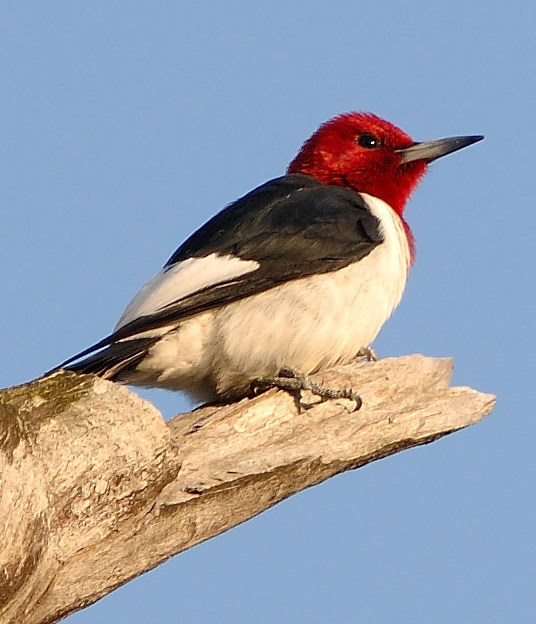Last updated: June 21, 2024
Article
Bird Community Monitoring at Lincoln Boyhood National Memorial, 2019

NPS
Why Do We Monitor Birds?
Birds are an important part of the world we live in. They eat pests, disperse seeds, pollinate plants, and feed us, and birdwatching is a multi-billion-dollar industry. Park interpretive programs often feature birds because of the enjoyment they provide. Birds are also great indicators of environmental change. They serve as the canary in the coal mine, so to speak, for an ecosystem. Deforestation for agriculture and urban development threaten bird habitat in the region around Lincoln Boyhood National Memorial. Unfortunately, 43% of the birds that breed on the park are in decline in the region and some birds, like the Chimney Swift, Common Grackle, House Sparrow, and Northern Bobwhite, are declining at alarming rates.
Scientists in the Heartland Inventory and Monitoring Network measure changes in birds and their habitat to determine the health of bird communities and park ecosystems. During the breeding season, we survey birds at Lincoln Boyhood National Memorial and gather information about the structure and composition of the park plant communities that birds live in. We also compare park bird trends to bird trends in the larger region. Together, these data help researchers determine how bird populations are faring and how birds respond to changes in their habitat. Knowing how birds are doing can help the park take effective steps to restore and maintain the park's beautiful landscapes.

NPS
Bird Communities at Lincoln Boyhood National Memorial (2007–2019)
We started surveying birds at the park in 2007. We have found 82 different bird species in 9 years of surveys (there were no surveys in 2008, 2009, 2010, and 2012). Sixty-five of these species have the potential to breed within the park. This is about 57% of the total species we would reasonably expect to be breeding here.
The number of bird species found during surveys and how they were distributed across the landscape was relatively unchanged over the years. We found an average of 23 bird species each year. Three breeding species on the park are considered species of conservation concern for the Central Hardwoods Bird Conservation Region, the region in which the park is located. Forty-three breeding species on the park are woodland associates or woodland obligates (species that require woodland habitat to survive).
| Common Name | Scientific Name | AOU Code | Park Resident? |
| Kentucky Warbler | Geothlypis formosa | KEWA | summer resident |
| Red-headed Woodpecker | Melanerpes erythrocephalus | RHWO | year-round resident |
| Wood Thrush | Hylocichla mustelina | WOTH | summer resident |
Bird Habitat
Lincoln Boyhood National Memorial is located in what was once a heavily forested section of the interior highlands of the Central Hardwoods Bird Conservation Region. A large portion of this area has been converted to agriculture, but the park remains mostly forested. The unchanging diversity of birds at the park suggests that the habitat on the park has remained similar over the years. We will continue to monitor birds and how they respond to changes in their environment to help the park manage habitat for birds. Conserving bird habitat preserves entire ecosystems for the benefit of all species.

NPS

NPS
Trends of Common Bird Species
Five bird species had populations that were large enough for us to measure abundance (how many individuals there were). Abundance measures allow us to look at bird population trends in the park and compare them with trends in the Central Hardwoods Bird Conservation Region. Overall, common bird populations in the park are faring similarly to populations in the larger region.
- The Northern Cardinal population significantly increased in the park since 2007.
- Four species had stable populations in the park since 2007: Blue-gray Gnatcatcher, Eastern Wood-pewee, Indigo Bunting, and Tufted Titmouse.

Photography by: Unknown/public domain
Did You Know?
Chimney Swifts roost in an abandoned chimney on Lincoln Boyhood National Memorial. This species is unique because they only stop their endless flight when they go to roost, to build a nest, or to incubate eggs. Feeding, drinking, and gathering of nesting materials are all done on the wing. While Chimney Swift populations are declining in the larger region, they have remained relatively stable over the years on LIncoln Boyhood National Memorial.
For More Information
Read the Full Report.Check back later for updates. We will update this page each year as we gather more information.
Visit the Heartland Inventory & Monitoring Network website.
